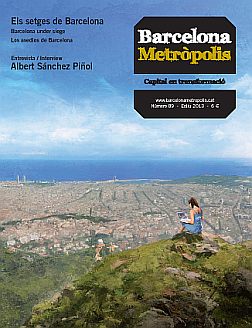- Indumentària [Clothing]
- La ciutat del Born. Barcelona 1700 Collection
- Albert Garcia Espuche (director)
- Ajuntament de Barcelona. Museu d’Història de la Ciutat
- Barcelona, 2013 (expected)
Any analysis of the society of Barcelona like the one proposed by the Barcelona 1700 collection must include a volume on the study of the clothes and wardrobes of our ancestors. This volume, which features collaborations by Albert Garcia Espuche, Sílvia Carbonell with Sílvia Saladrigas, Francesc Riart, Julia Bertrán de Heredia with Núria Miró, Aileen Ribeiro and Ruth de la Puerta Escribano, helps us to understand not only the “human landscape” of the streets in the 17th and 18th centuries, but also a large part of the social tensions of that period, mainly because ever since the mid-17th century the textile sector has been the driving force of the Catalan economy, and the output of the country’s looms would be part of its national identity for centuries.
This is the world of the merchants of Barcelona, of the wool and textile guilds, the veritable spearhead of innovation (even at the cost of dispatching, when necessary, “spies” to learn techniques in other countries, from Holland and England to the lands of Occitania). And these self-same guilds commissioned the Político discurso [Political discourse] by Narcís Feliu de la Penya (1681), a landmark in economic studies in our country.
It is not easy to say if the inhabitants of Barcelona in 1700 dressed well or badly. But the volume does document the fact that clothes were made using up to 68 different types of fabrics, and warm clothing with 35, which denotes a sophisticated taste and perhaps a certain economic standing. Moreover, the surprising number of shirts that appeared in the lists of the craftsmen and fishermen proves that the cliché which held that our ancestors were dirty is essentially wrong. And the fact that the excavation work in El Born turned up metal spectacle frames –one bearing the “London” engraving– allows us to suppose that the Barcelona of the period enjoyed a certain level of sophistication in terms of clothing and in other areas of everyday life.
Clothes and wardrobes in general highlight social change and the forcefulness of changing customs very significantly. The period spanning the 17th and 18th centuries witnessed a slow but relentless transformation in the way people dressed, evolving from merely imitating the trends of the Spanish Court (dark and bulky clothes) to embracing the novelties coming from the French Court, where the style was bolder and brighter. So daring in fact, and as is graphically documented in the book, that women did not always cover their nipples at banquets. The exuberance and luxury of the period are well known to historians, and even a classic scholar of the standing of Fernand Braudel noted that in Europe in general, the birth of what we now call “fashion” may be placed circa 1700. However, it is interesting to note that in Barcelona in the year 1716 there was one hairdresser from Genoa, another from Bologna and a good half-dozen French hair-stylists working there regularly, and that there were up to seven sandal-makers in the city in that same year. The cosmopolitanism of our ancestors is therefore very well documented.
However, clothes still show, by way of example, the social tension produced by the ineffective tax system (customs stamp), which could neither stop smuggling nor provide a legal framework to promote economic activity. It is well known that protectionist tension was derived mainly from the guilds’ traditional lack of trust in commercial activity. In the year 1705, when the textile and leather associations called for a “remedy” (sic) to the damage caused by free trade and proposed the prohibition “of consuming and using foreign gold and silver fabrics and drapes and sack-cloths”, the reader will quickly recall the complaints raised by retardative and moth-eaten protectionist advocates throughout the 14th century and a good part of the 15th. In history, the micro level is very often the setting where the great social tensions play out.



